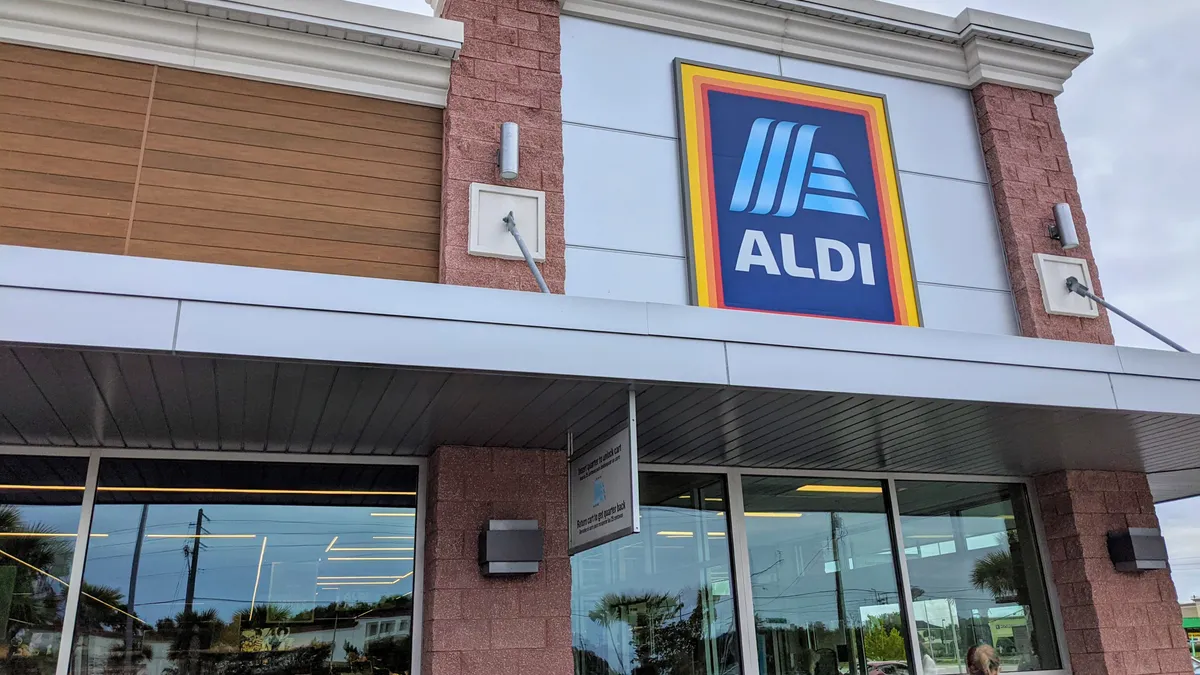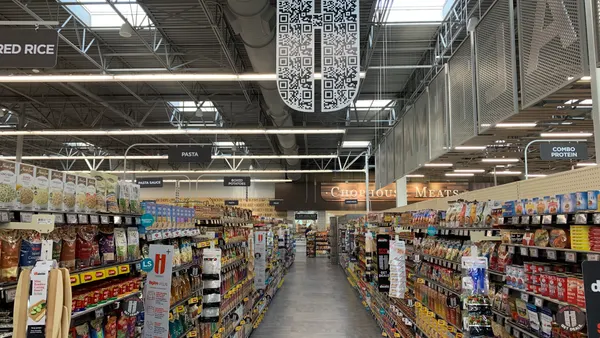Dive Brief:
- Foot traffic at U.S. Aldi stores rose nearly 30% year-over-year in February, continuing a string of double-digit monthly gains that extends back to August 2023, according to data from Placer.ai.
- German supermarket rival Lidl recorded an increase in foot traffic in stateside stores of about 9% in February compared with the same period in 2023, reversing a slight decline in January.
- Aldi has consistently outpaced Lidl in attracting shoppers during the past year as both chains look to expand their footprints in the U.S.
Dive Insight:
The data from Placer.ai underscores the strong progress Aldi has made in connecting with shoppers as people continue to place a high priority on keeping their grocery bills in check.
The chain, which said last month it plans to add about 800 new stores over the next few years after notching rapid growth in 2023, recorded its strongest gain in foot traffic during the past year last month when visits were up by 28.5%. Placer.ai noted in its report that the increase in visits to the chain is due in part to the company’s expanding store count, adding that Aldi’s intense focus on value has also fueled its popularity with shoppers.
Lidl has also made progress in drawing shoppers to its locations, but the chain’s growth has been considerably slower than Aldi’s. While the company recorded rising foot traffic every month over the past year except January, Lidl didn’t exceed the 10% mark in any month during the period.
Like Aldi, Lidl has been opening new stores, but the company has only about 170 stores in the U.S. compared with Aldi’s fleet of about 2,400 locations.
Placer.ai said its data show that Lidl and Aldi are reaching distinctly different groups of shoppers, with the latter chain appealing to wealthier customers. For example, more than 7% of Aldi’s shoppers fall into the “Small Town Low Income” category, while fewer than 1% of Lidl’s customers belong to that segment, according to the report.
Lidl’s potential market of shoppers — defined as people who live in the areas its stores serve — have a median household income of about $79,000 per year, and the grocer is bringing in people who annually take in almost $10,000 more than that amount, according to the data analysis firm. Aldi, meanwhile, attracts shoppers with a median household income of about $67,000, slightly lower than the amount people in its potential market earn, Placer.ai reported.












